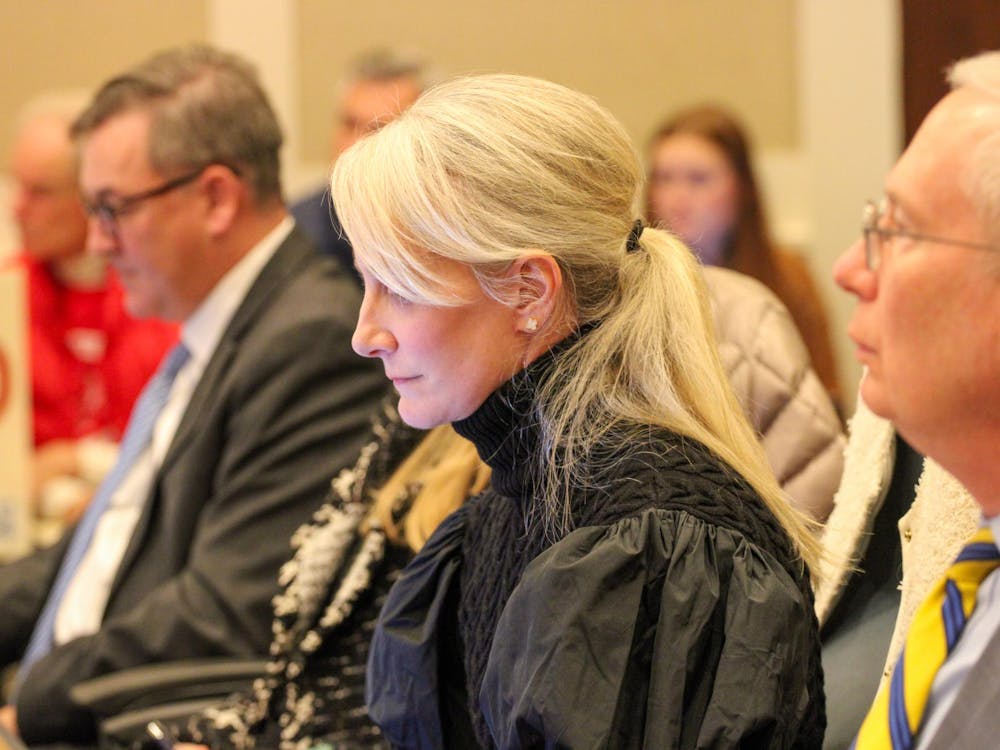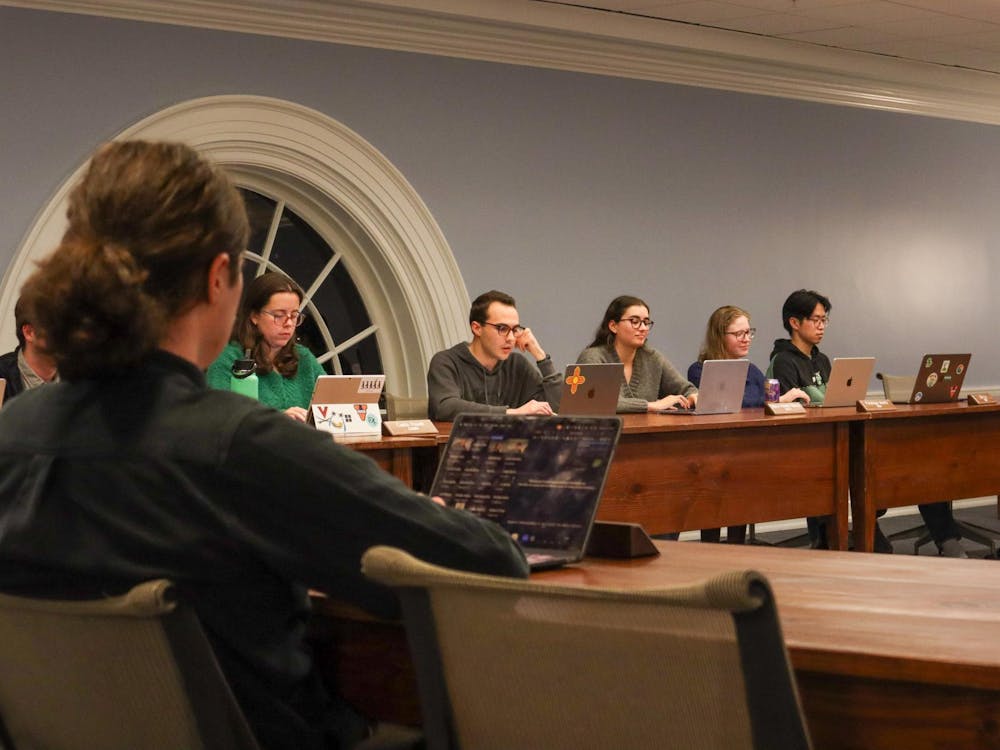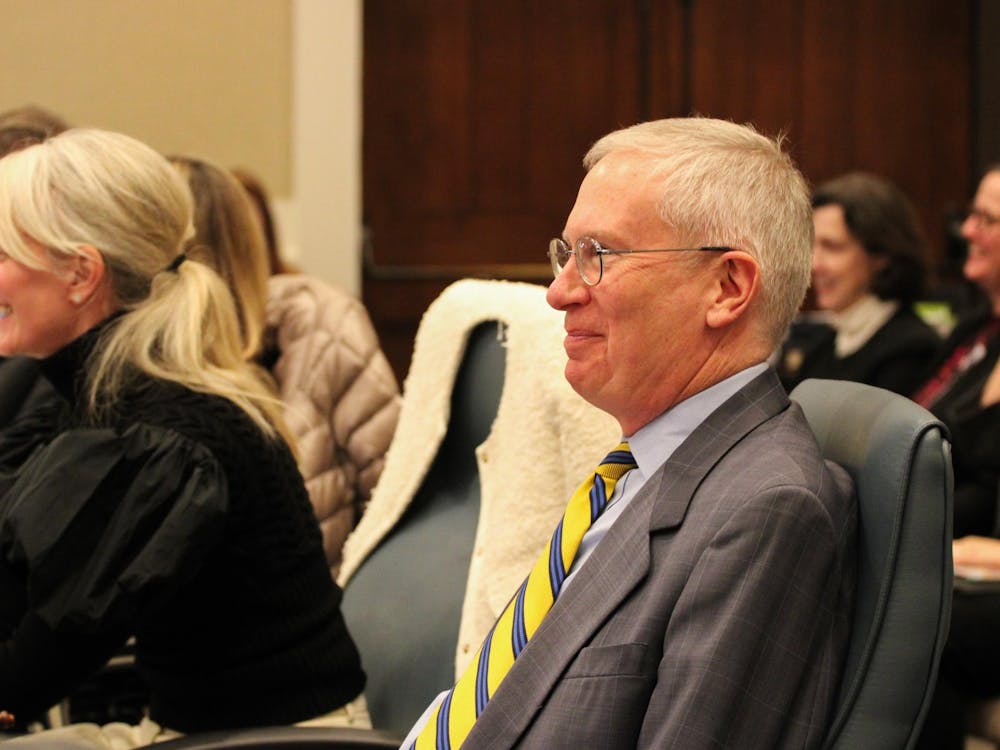In such a vast universe, the chance of detecting extraterrestrial intelligence seems rather slim. But by making use of recent technological advances, scientists involved in the Search for Extraterrestrial Intelligence (SETI) are looking to beat the odds.
In an interview with The Cavalier Daily, SETI President Frank Drake spoke about the importance of searching beyond the solar system.
"We've been looking since 1960 and we haven't found anything yet, but the signal could be there tomorrow," Drake said.
Drake spoke to the public at the Charlottesville Performing Arts Center Tuesday night as part of the National Radio Astronomy Observatory's 34th Jansky Lectureship. Named after Karl Jansky, one of the founders of radio astronomy, the honor of giving the lecture is awarded annually to recognize outstanding achievements in astronomy.
Drake, also author of the well-known Drake equation -- a method of estimating the number of intelligent civilizations in the universe -- spoke about the progress SETI has made in accurately identifying extraterrestrial signals and cited evidence that supports the existence of extrasolar civilizations.
Contrary to popular belief, SETI does not involve itself in UFO sightings and reports, Drake said.
"People confuse us with UFO organizations a lot, and we don't like that because we're serious," he said. "We believe strongly in the importance of scientific evidence to back up our claims."
These days, SETI searches the sky via the privately funded Project Phoenix. Using the 1,000-foot radio telescope in Arecibo, Puerto Rico, Phoenix project scientists listen for radio signals that are purposely being beamed toward Earth -- a strong, direct radio beacon -- or are unintentionally being transmitted from another planet -- for instance, weaker, leakage radiation from orbiting satellites.
Phoenix is aimed toward the vicinities of nearby sun-like stars since they are the areas most likely to contain Earth-like planets.
But, a main problem facing SETI is the ability to distinguish Earth's radio signals from those of an extraterrestrial origin. Termed radio frequency interference (RFI), the constant noise from earth's satellites, accounts for many false alarms.
"Any strong signal is most likely to come from our technology," Astronomy Prof. Robert T. Rood said. "The problem of being able to distinguish between the two is getting worse."
There are ways to combat RFI, however. The most effective way would involve shielding the telescope from the Earth altogether, Drake said. To do this, SETI would require a location that never has the Earth in its line of sight, such as the far side of the moon.
"The far side of the moon would shield the telescope from any terrestrial radio interference," he said. "Though NASA is talking about someday placing a scientific station on the far side of the moon, actual construction is a long way off."
But because it has adequate funding, given sufficient time, Project Phoenix is advanced enough to distinguish between signals.
"Other projects know how to do this, but they cannot afford it," Drake said.
Phoenix verifies any suspicious signals with two telescopes. If the Aericibo telescope detects a possible extraterrestrial transmission, the location is sent to a second, 250-foot telescope in England to be rechecked, a verification system which eliminates 95 percent of possible transmissions.
"If it is terrestrial interference, because they are so far apart, both telescopes will not pick up the signal." Drake said.
Project Phoenix currently is permitted to use the Arecibo telescope only 20 days per year. Understandably, SETI is anxious for its own telescope. The proposed One Hectare Telescope (1HT) could provide SETI with year-round observing time.
Presently in the development stages, the 1HT is composed of an array of commercial satellite dishes, all operating as a unified system. These satellites are relatively inexpensive, and SETI could purchase many individual units to continuously expand the collecting area, Drake said.
"The 1HT will give us a telescope dedicated to SETI 365 days a year," he said. "Currently we're building a rapid prototype array consisting of seven antennae that will be used to make a working system which can then just be duplicated over and over."
Funding is a constant concern for SETI, but Drake emphasizes that money must not stand in the way of possibly the greatest discovery in history.
"It is hard to raise money because you can't make any promises. But we know that one day there will be a signal. There is life out there -- that's the easy question. The hard question is what it will take to find it"






